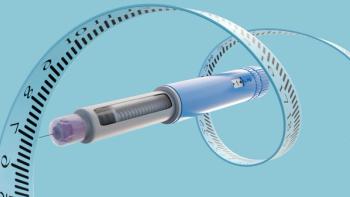
Study Results Show Declines in Continuity of Medication Use Among Adults With T2D
Declining and inconsistent use of blood-pressure, glucose-, and lipid-lowering medications for those with type 2 diabetes suggests treatment gaps, investigators say.
Nearly 20% of adult participants with diabetes did not maintain continuity in the use of glucose-lowering medications, according to the results of a study published in JAMA Network Open.
Pharmacological treatments that control blood glucose levels, blood pressure (BP), and lipids are a primary focus of care for individuals with type 2 diabetes (T2D), as these treatments lower the risk of diabetes-associated complications.
“Suboptimal medication adherence among people with [T2D] has been associated with preventable complications and the onset of serious health problems, such as heart disease, kidney disease, or amputation,” the authors wrote.
Noting recent findings indicating plateauing and declining control of these parameters among US adults with diabetes, investigators sought to characterize treatment continuity by adults with diabetes to identify possible treatment gaps.
To evaluate trends in longitudinal use of BP-, glucose-, and lipid-lowering medications by adults with diabetes, investigators conducted a serial cross-sectional study. The study included a total of 15,237 participants with diabetes participating in the Medical Expenditure Panel Survey (MEPS) between the 2005 to 2006 panel and 2018 to 2019 panel.
The study found that a mean of 19.5% (95% CI, 18.6%-20.3%) of participants did not maintain use of glucose-lowering medications. Similarly, a mean of 17.1% (95% CI, 16.2%-18.1%) of participants did not maintain use of BP-lowering medications. A mean of 43.3% (95% CI, 42.2%-44.3%) of participants did not maintain use of lipid-lowering medications.
Additionally, the findings showed that the proportion of participants who continued use of glucose-lowering medication in both years trended down from 84.5% (95% CI, 81.8%-87.3%) between 2005 and 2006 to 77.4% (95% CI, 74.8%-80.1%) between 2018 and 2019. Inconsistent use of these medications also increased.
Inconsistent use of BP- and lipid-lowering medication trended upward as well. Inconsistent use of BP-lowering medication rose from 3.9% (95% CI, 1.8%-6.0%) between 2005 and 2006 to 9% (95% CI, 7.0%-11.0%) between 2016 and 2017, while inconsistent use of lipid-lowering medication reached a high of 9.9% (95% CI, 7.0%-12.7%) between 2017 and 2018.
When the findings were adjusted for age, body mass index, Charlson Comorbidity Index score, education level, income group, payer type, and sex, investigators identified subgroup differences in longitudinal use of treatments.
Black participants were more likely to inconsistently use rather than maintain continuity in use of glucose-lowering medications compared with White participants (odds ratio [OR], 1.32 [95% CI, 1.07-1.62]).
Hispanic participants were more likely to inconsistently use BP-lowering medications (OR, 1.44 [95% CI, 1.08-1.92]).
The authors suggested that differences across minority ethnic and racial populations may reflect heterogeneous individual and systemic factors.
Female participants were more likely than male participants to not use any glucose-lowering medications (OR, 1.23 [95% CI, 1.06-1.42]), while younger participants were more likely to not use any treatment.
Additionally, uninsured participants were more likely to inconsistently use glucose-lowering medications and use no BP-lowering medications.
Overall, investigators found persistent and sometimes increasing gaps in continuity of use of these treatments at the national level, despite long-lasting guidelines that generally recommend medications as an ongoing part of therapy for adults with T2D.
As consistent medication use is considered critical for diabetes management, the findings of this study suggest that multifaceted reforms may be needed to address inconsistent use of these medications and the associated complications.
The study faced some limitations. The MEPS does not include information, such as cardiometabolic parameters, that may have allowed the authors to evaluate whether changes in treatment were intended or unintended.
The authors also noted that the MEPS did not allow for distinguishing between type 1 diabetes (T1D) and T2D.
As adults with T1D are more likely to maintain continuity in use of insulin, their inclusion in the estimates likely overstated continuity of use by adults with T2D.
However, as more than 90% of diabetes diagnoses in the US are T2D, these findings may largely reflect T2D, investigators said.
Reference
Chehal PK, Uppal TS, Turbow S, et al. Continuity of medication use by US adults with diabetes, 2005-2019. JAMA Netw Open. 2023;6(1):e2253562. doi:10.1001/jamanetworkopen.2022.53562
Newsletter
Stay informed on drug updates, treatment guidelines, and pharmacy practice trends—subscribe to Pharmacy Times for weekly clinical insights.
















































































































































































































